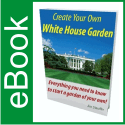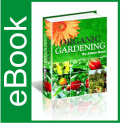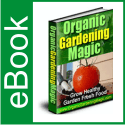Gardening Seeds
Gardening Seeds
Article by Timmy Helve
Most gardening enthusiasts prefer to use seeds in the initial growth stage instead of buying seedlings. Gardening seeds are a better choice than seedlings when preparing a planting plot. Seedlings require a lot more work than the seeds because of the need to transplant them. However, before you purchase seeds check all the specifications about the quantity and the survival rates of the seeds you intend to use. Steer clear of any seed supplier or brand that does not give you this information.
Before you open each packet containing vegetable seeds, make a note of the date for future reference. Make use of the planting instructions found on this packet. They will make the whole job easier. Doing so will make your life easier and ensure that the seeds grow well, since the instructions are usually prepared by expert agronomists. Every so often, spot check the quantity of seeds contained in the packet. This is crucial, since the space needed for planting depends on the quantity. The viability of garden seeds varies. Reputable seeds’ stores will specify the testing date and the probable percentage germination. Seed packages displaying all this information are usually the best.
Vegetable seeds are mostly developed to achieve optimum germination in moist soils. However, if your seeds receive too much moisture, they will develop delicate roots and small leaves. Of course, you must provide adequate water for the seeds to grow if you are growing them on a dry area.
It is good to keep some vegetable seeds for later use. Make a habit of planting sparingly. On the other hand, if you are looking for a big harvest, you can use all the seeds provided in the seed packet. All information regarding the harvest that you should expect from them is usually given on the packet or booklet. Plant enough for your needs, but do not make the mistake of planting excess plants that may end up as waste.
It is important to space your plants well. The spacing should be wide rather than close and bunched. If you plant them too close to each other, you will need to do a lot of thinning. The closer you plant the seeds the more thinning out you need to do. Failure to thin out means that you will end up with a poor harvest and scrawny plants due to plant competition. The immature plants that you will be forced to leave behind will be destroyed when harvesting. Make use of stakes to determine the raw spacing, if necessary. Write down all the information relating to your crop such as the source of the seeds, and planting date. This information will assist you later.
Creating a vegetable garden is a very fulfilling activity that you can use to bring your family together. You can prepare and cultivate a fine home garden with your spouse and children, and your children will benefit in many ways as you instill vital gardening skills and lead by example. In modern times many kids have lost the concept of the law of the harvest, so they do not understand what it means to put a seed into the ground and take care of it. The thrill of planting and watching small vegetables grow into big healthy produce is easily one of the most amazing activities you can get involved in. Involve your family in harvesting and let the whole activity bring happiness to your home. Watering and weeding around the plants can also be a good team activity and provide natural therapeutic enjoyment. Use the internet and locate the best seed distributors in your area, and get involved in this great activity. You can also make use of vegetable seed catalogs to get the results you want.
About the Author
Timm Helverson is the author of this article on vegetable seeds. Find more information on vegetable seed catalogs here
Use and distribution of this article is subject to our Publisher Guidelines
whereby the original author’s information and copyright must be included.

 August 18, 2012
August 18, 2012 







